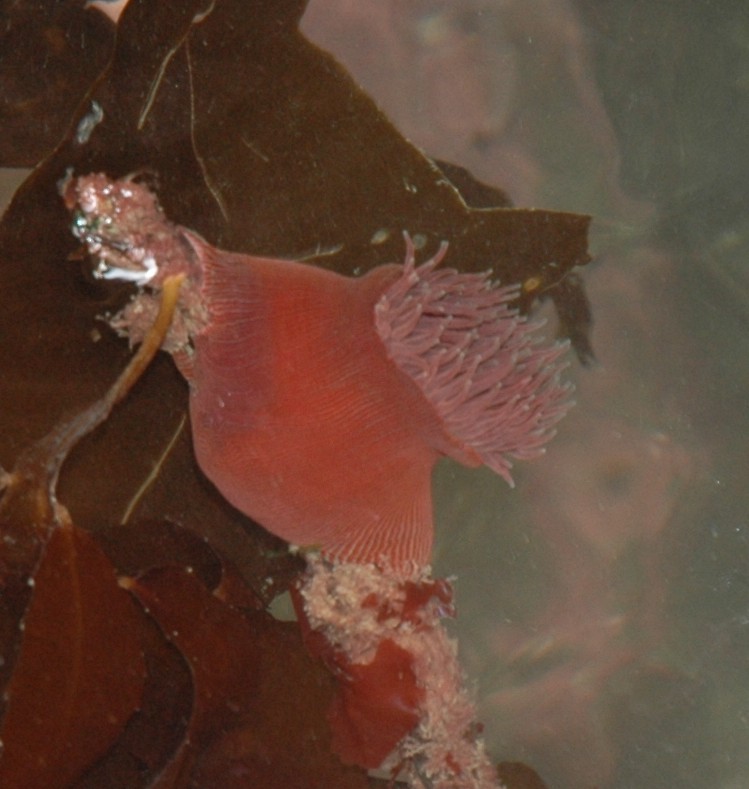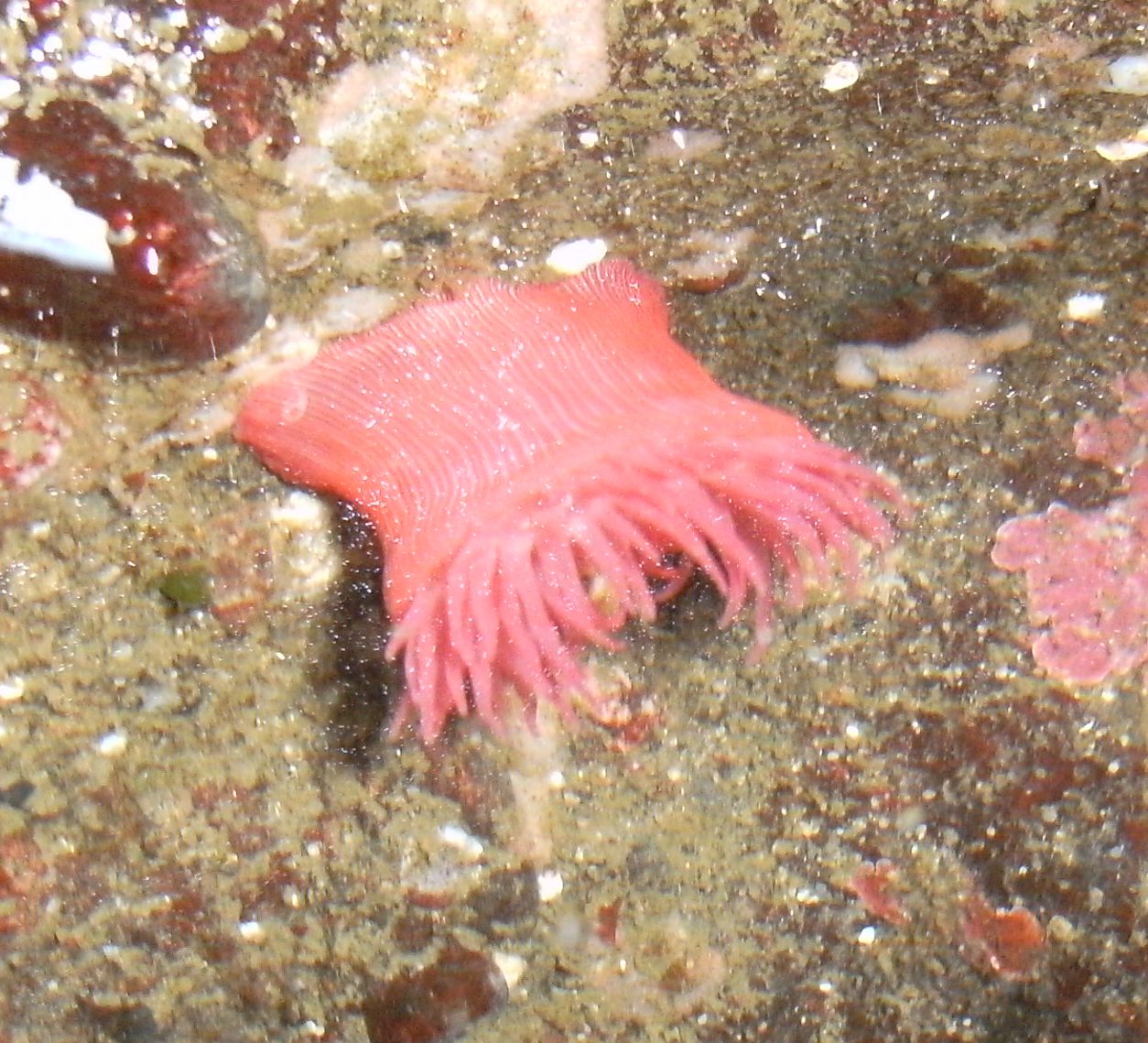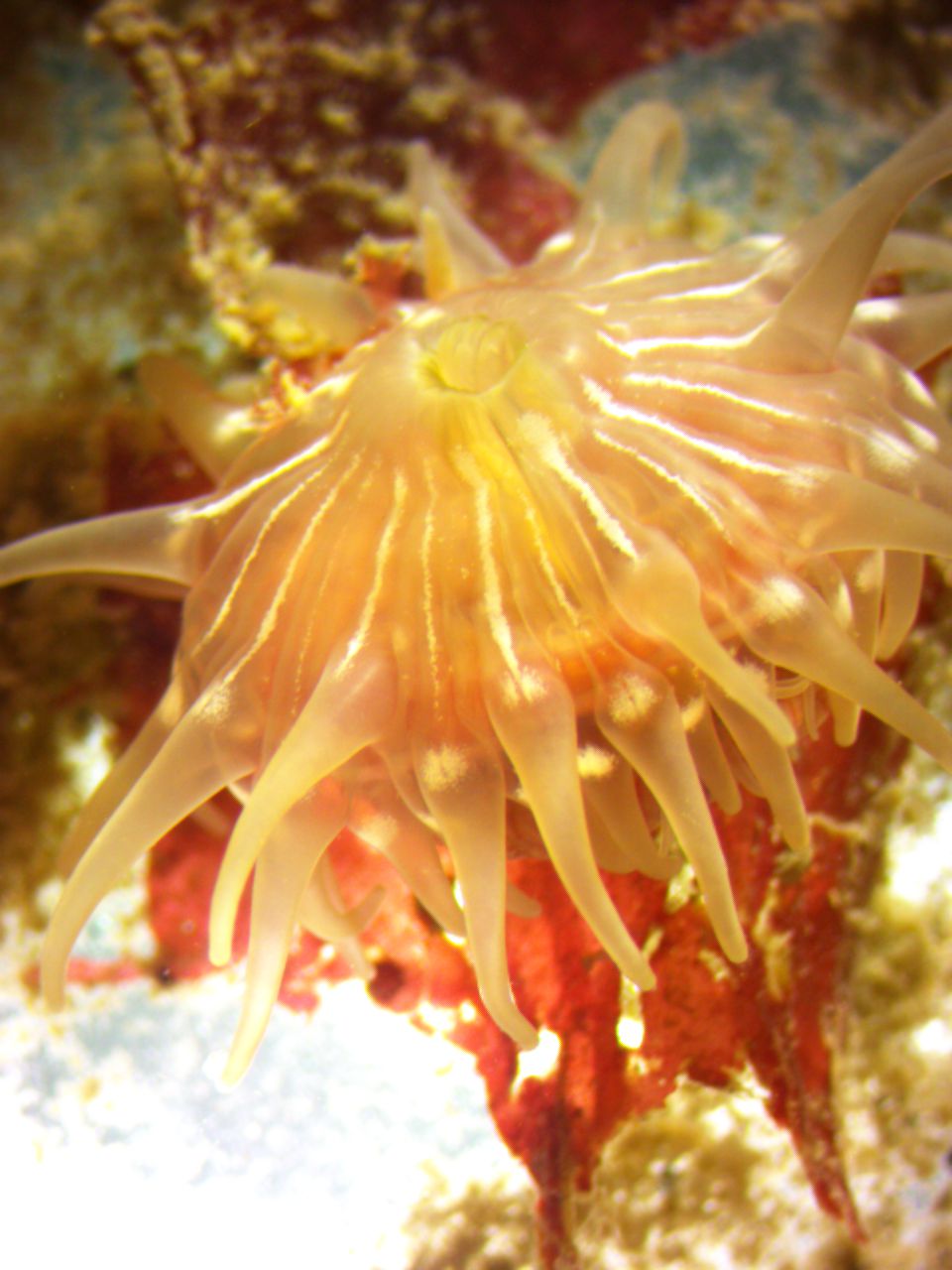Epiactis lisbethae Fautin and Chia, 1986Common name(s): Lisbeth's brooding anemone |
|
| Synonyms: |  |
| Phylum Cnidaria
Class Anthozoa Subclass Zoantharia (Hexacorallia) Order Actiniaria Family Actiniidae |
|
| Epiactis lisbethae clinging to an Eisenia kelp frond on the west side of San Juan Island. Diameter of oral disk about 4 cm. | |
| (Photo by: Dave Cowles. Identified with the help of Lisbeth Francis) | |
How to Distinguish from Similar Species:Epiactis fernaldi has no radiating white lines on the oral disk or on the column. The dark lines on the column of Epiactis prolifera do not continue above the middle of the column. The lines on the oral disk of Epiactis ritteri are broad and do not approach the mouth. Urticina crassicornis can have a similar mix of colors on the column but its tentacles have broad color bands and the colors on its column wall are broad blotches rather than fine vertical lines.
Geographical Range: Bamfield, Vancouver Island, Canada to Coos Bay, OR
Depth Range:
Habitat:
Biology/Natural History: Sexes are separate and reproduction is seasonal. This species broods its young externally. The brooded young appear to be all of similar age. Red, brown, and green females usually have pink young, while orange females usually have orange young.
| Return to: | |||
| Main Page | Alphabetic Index | Systematic Index | Glossary |
References:
Dichotomous Keys:Kozloff 1987, 1996
General References:
Sept,
1999
Scientific Articles:
Fautin, Daphne G and Chia, Fu-Shiang, 1986. Revision of sea
anemone
genus Epiactis (Coelenterata: Actiniaria) on the
Pacific coast of
North America, with descriptions of two new brooding species.
Canadian
Journal of Zoology 64:8 1665-1674
Web sites:
General Notes and Observations: Locations, abundances, unusual behaviors:

This 5 cm diameter individual is hanging from a north-facing wall on
San Juan Island at low tide.
Notice how the darker lines on the mesenterial insertions run all the
way up the column wall to the oral disk.
Identified by Lisbeth Francis (for whom the anemone is named)
Photo by Dave Cowles, July 2006
This mother is brooding a batch of babies on the column wall.

This
individual, about 5 cm across the oral disk, is living on the wall of a
tidepool near an overhanging rock at Cape Flattery. Photo by
Dave
Cowles, July 2015

This
individual, only 1 cm across the oral disk, has its oral disk wide open
and is displaying its mouth. Photo by Dave Cowles, August 2018

The
same individual (1 cm oral disk diameter) is carrying a belt of babies
around its column. Note that, unlike E. prolifera, the vertical stripes on
the column extend all the way to the top. Photo by Dave Cowles, August
2018
Authors and Editors of Page:
Dave Cowles (2006): Created original page
